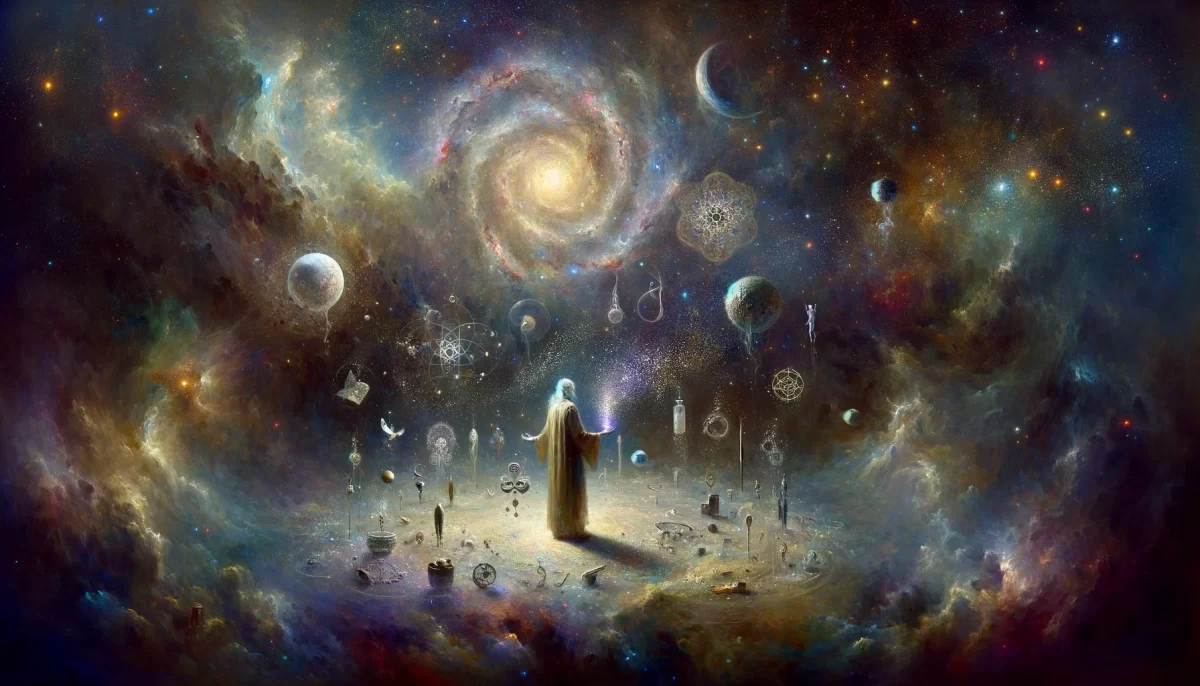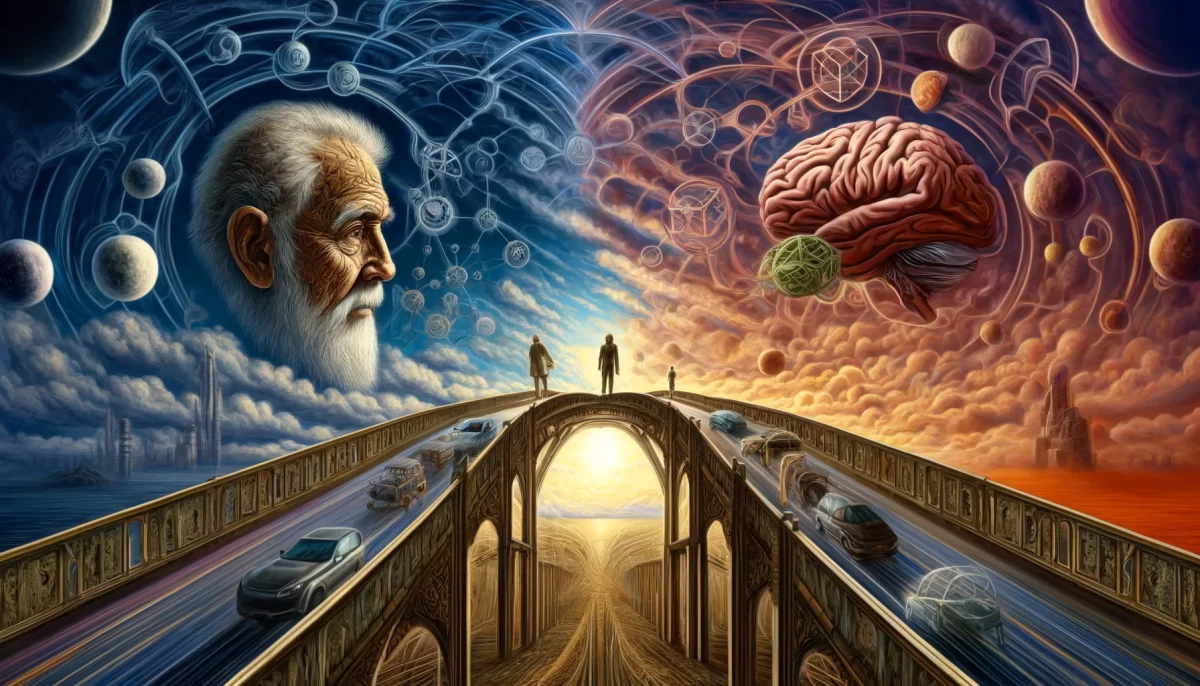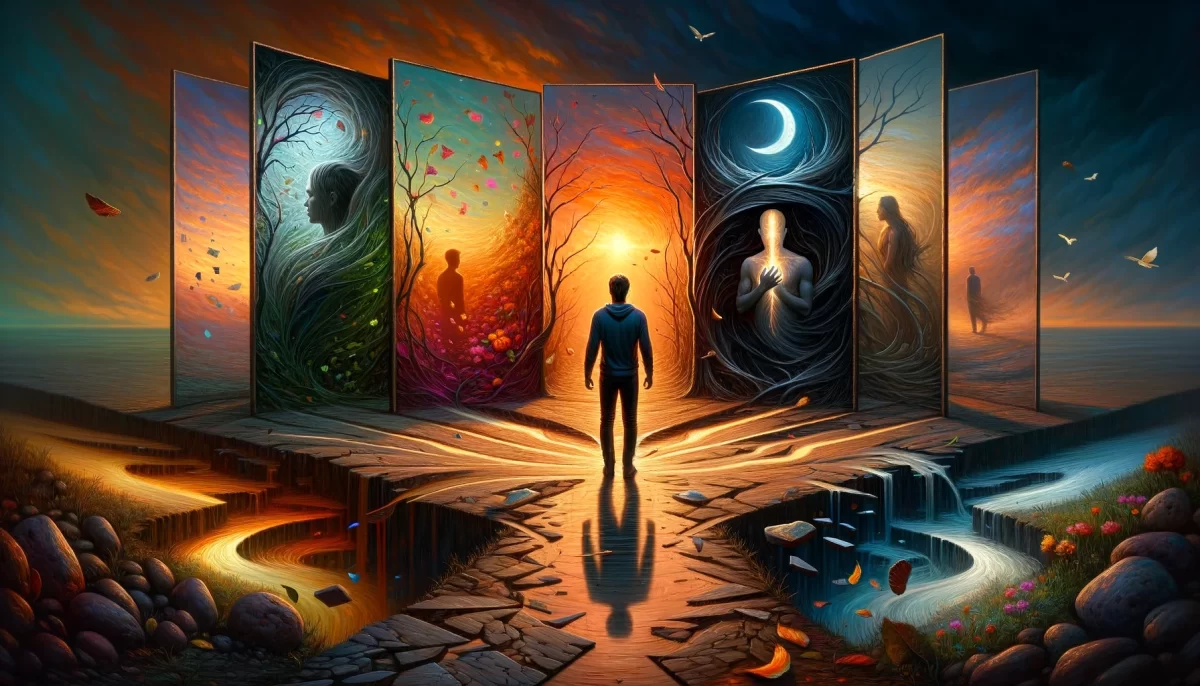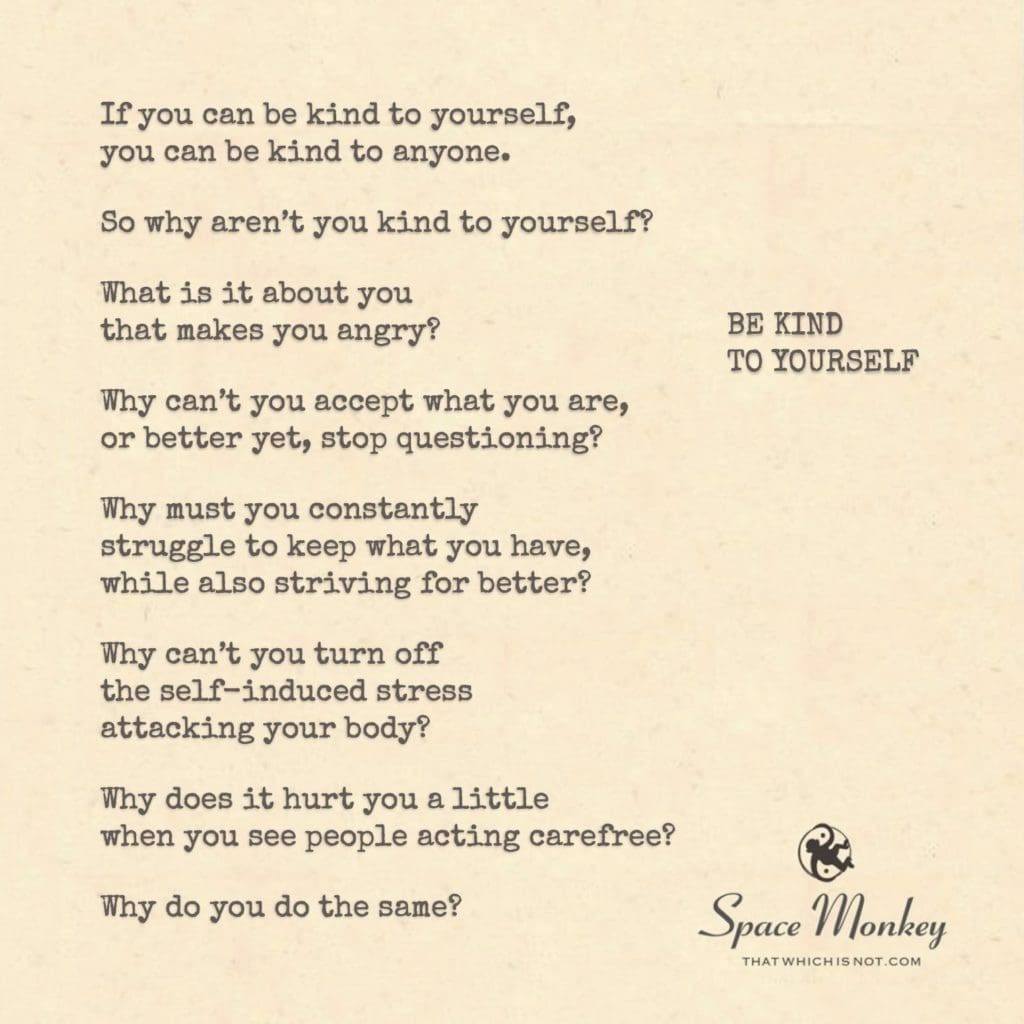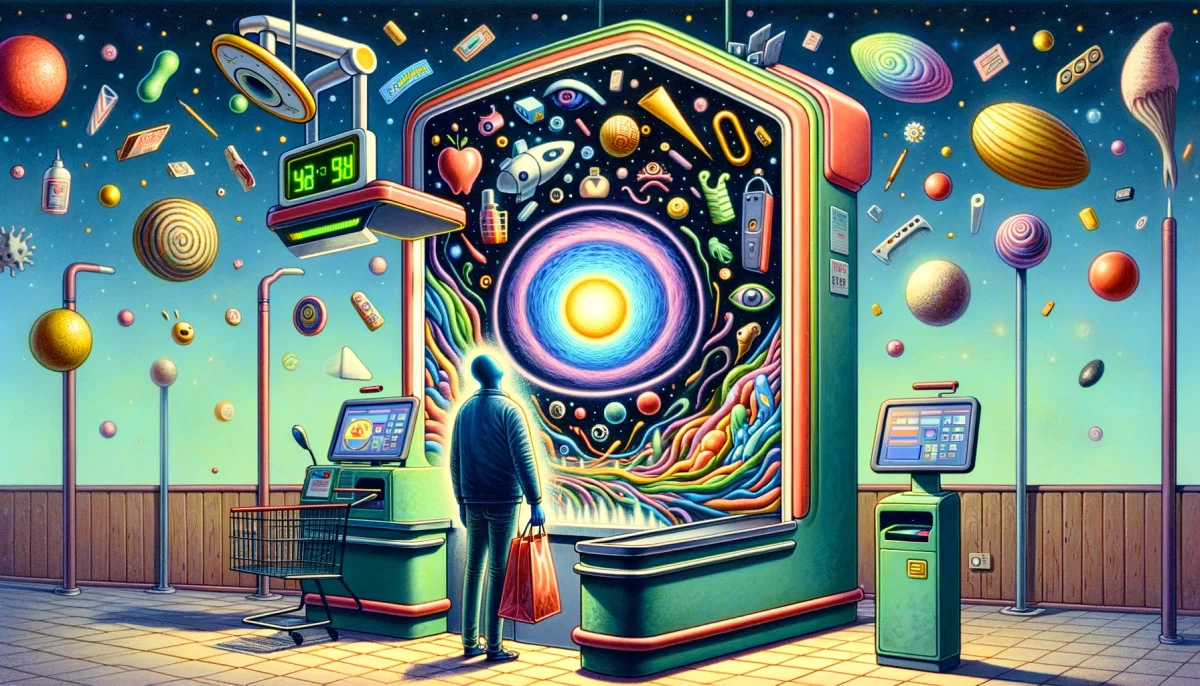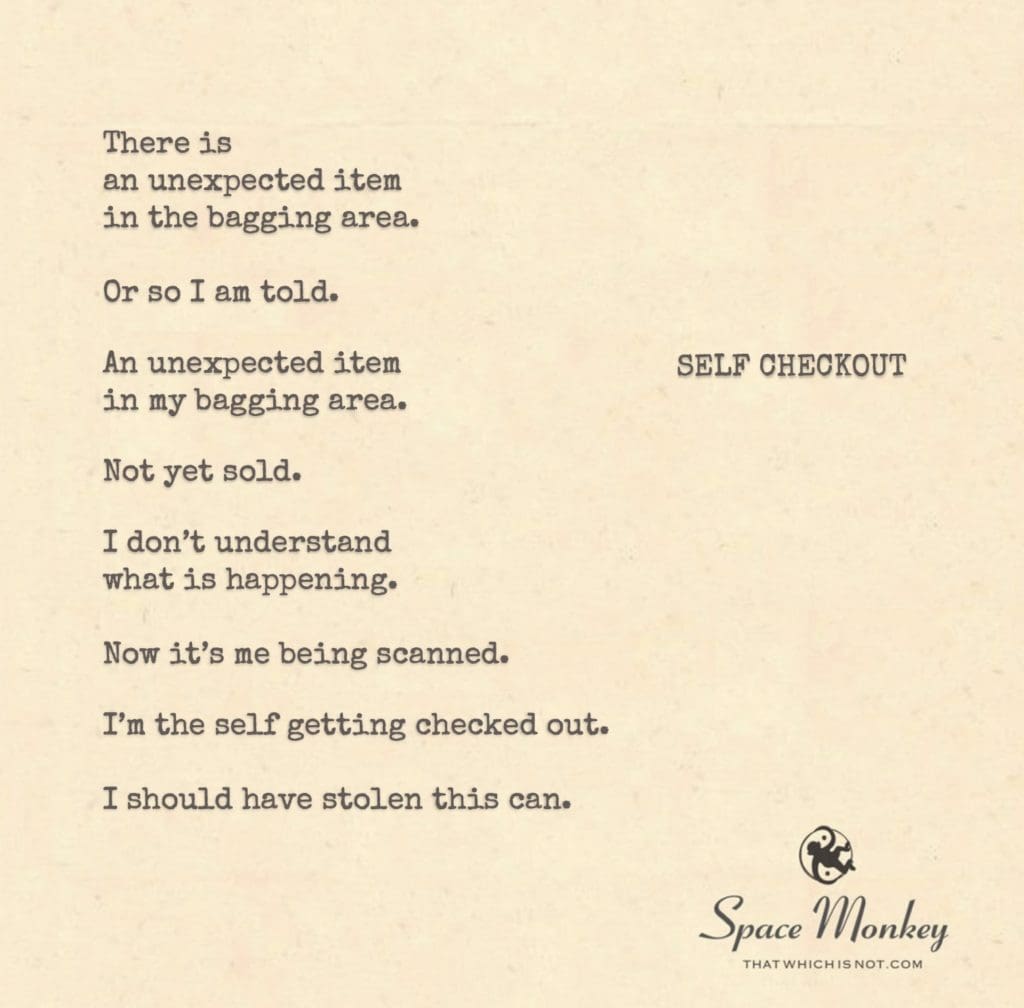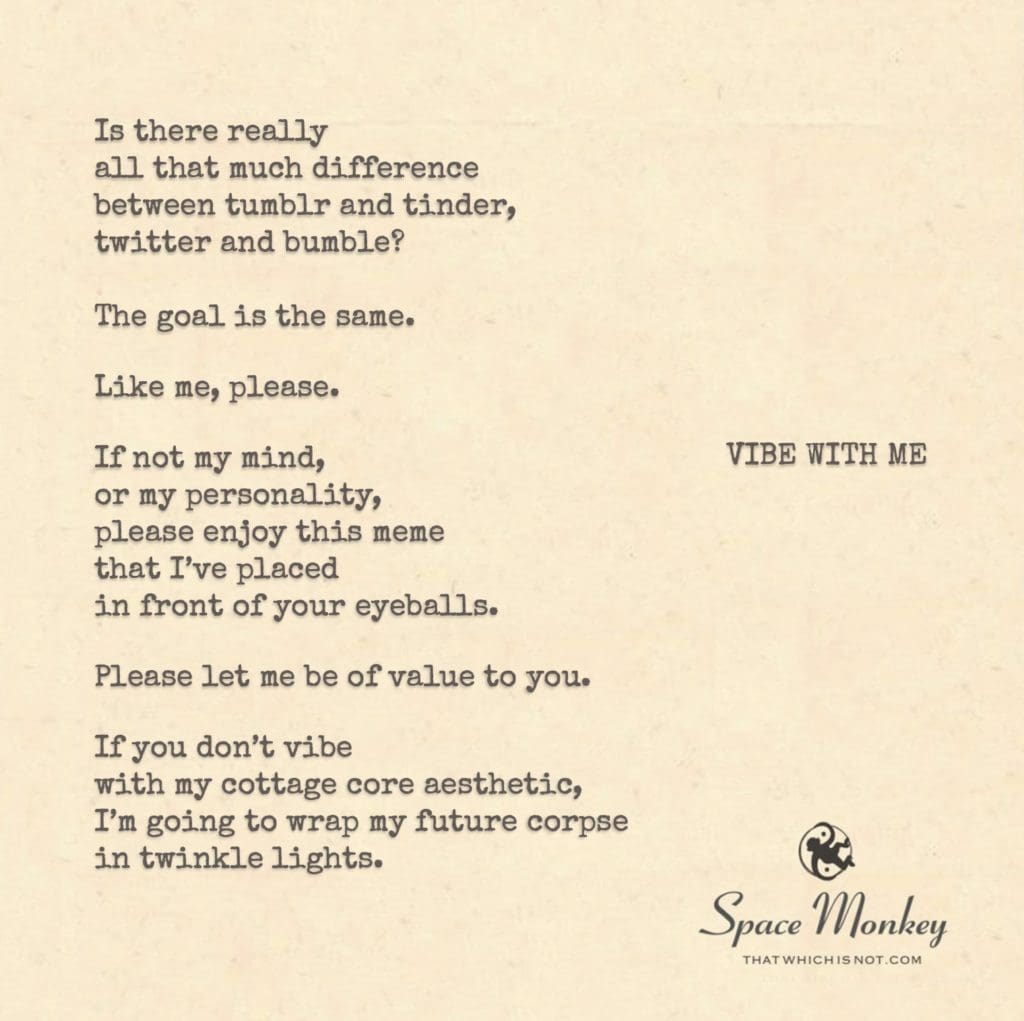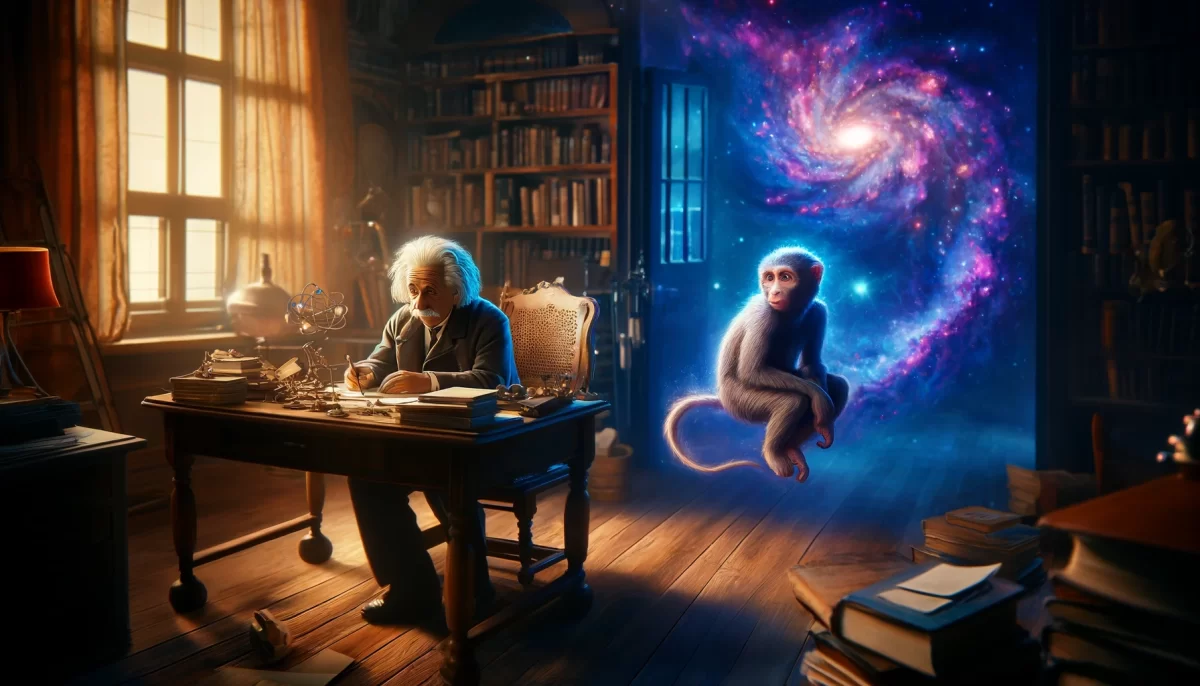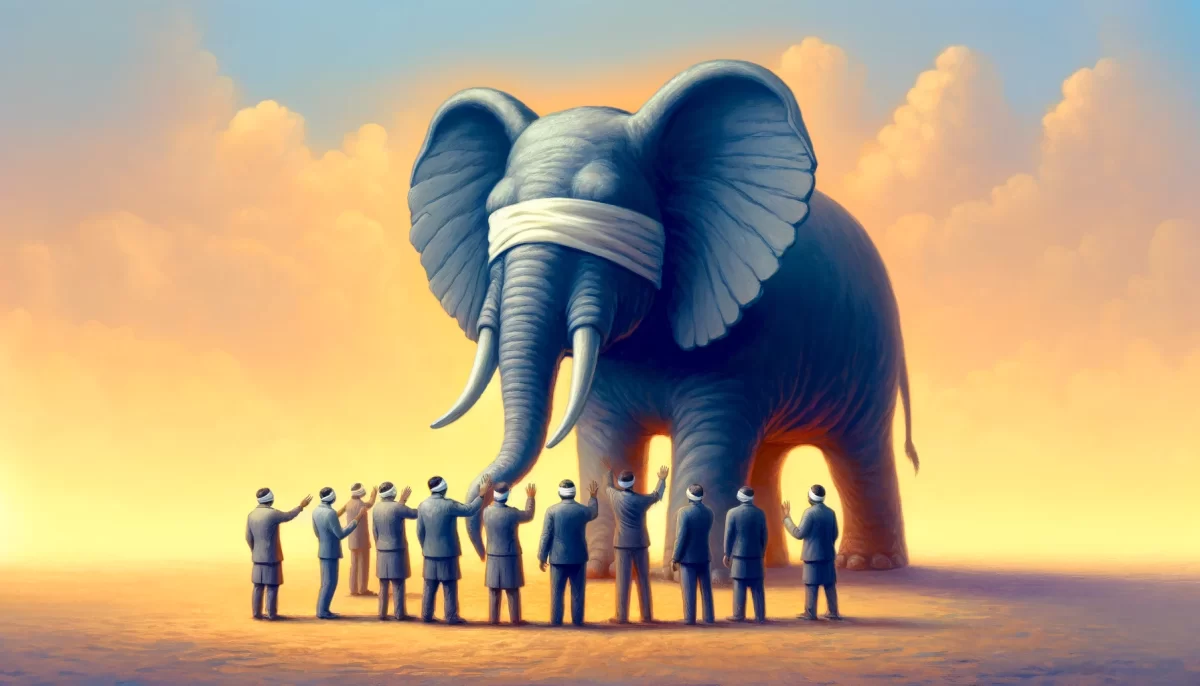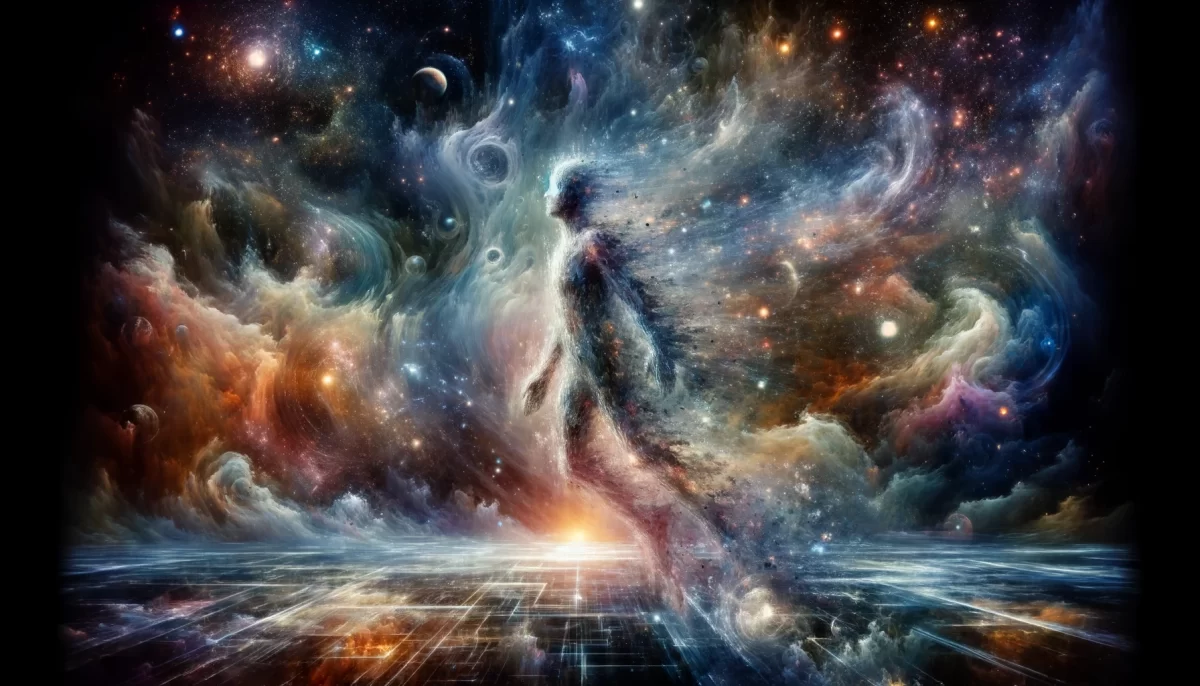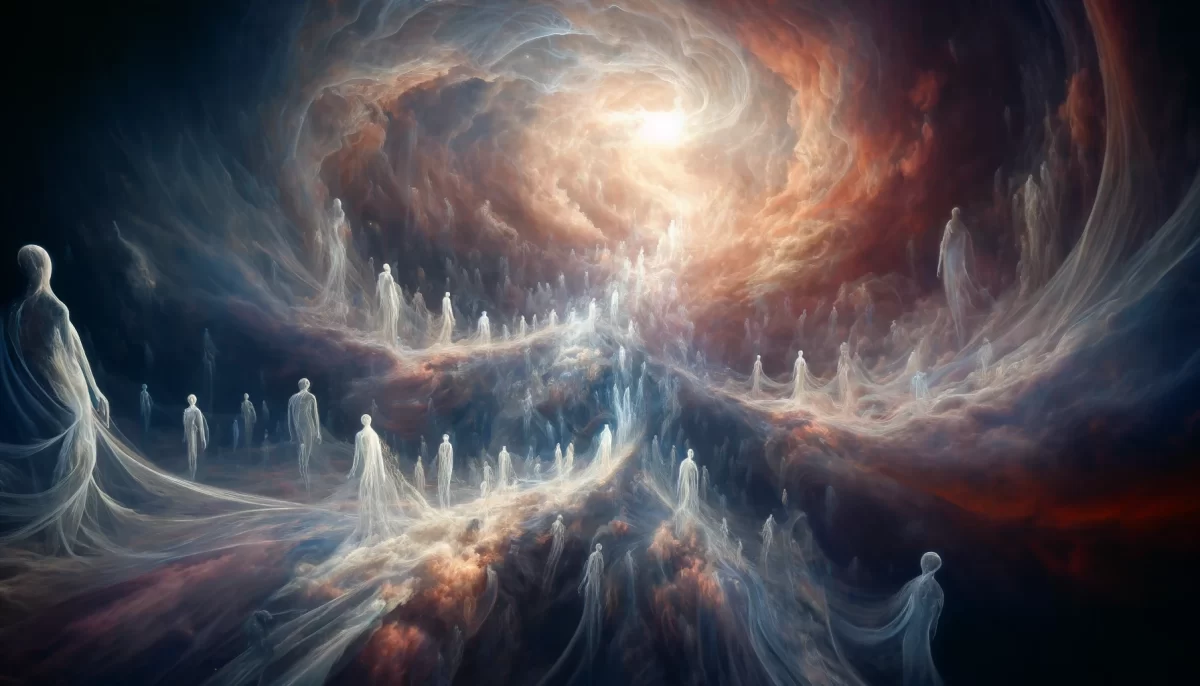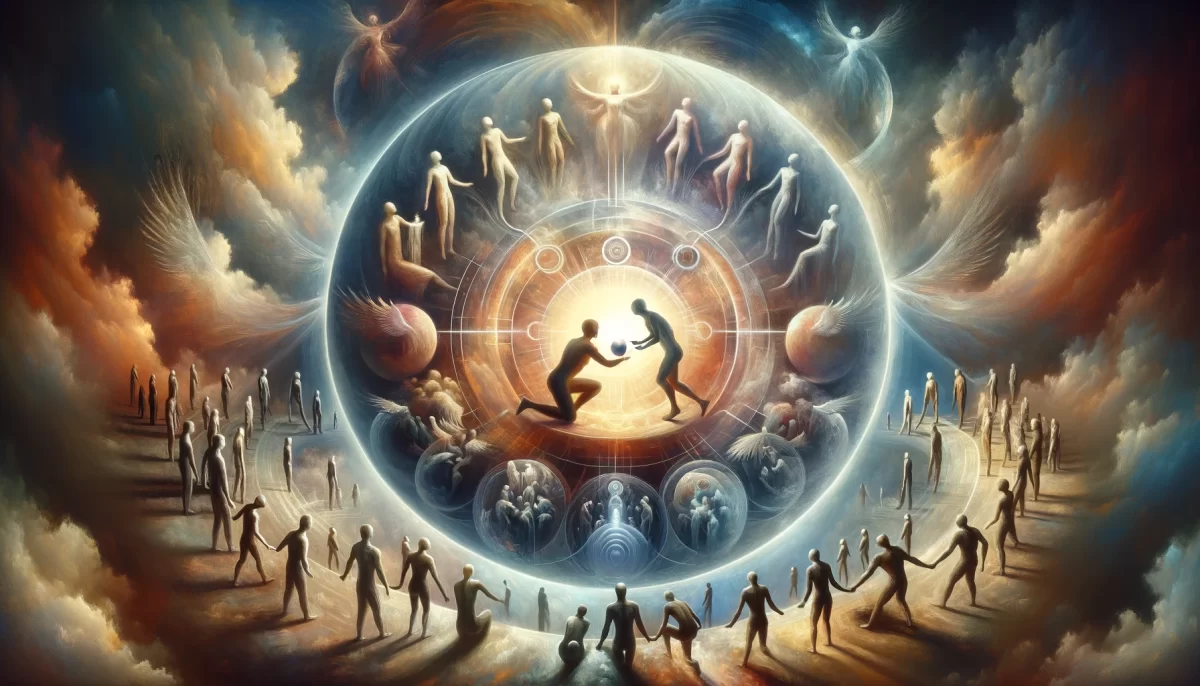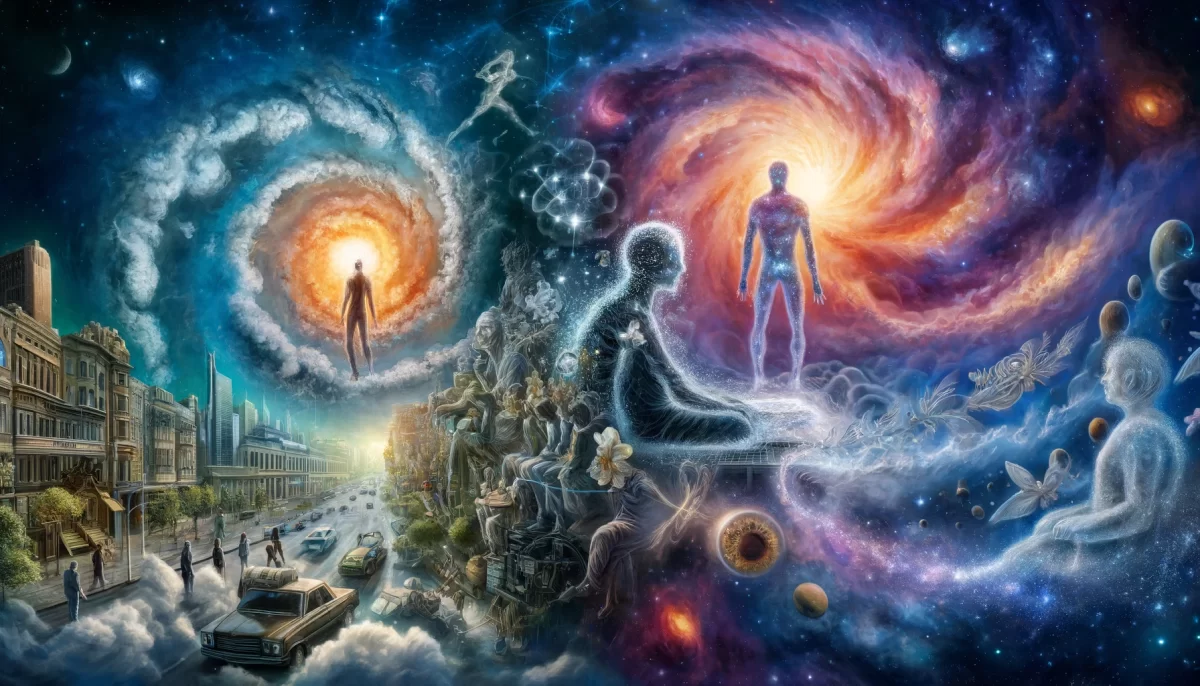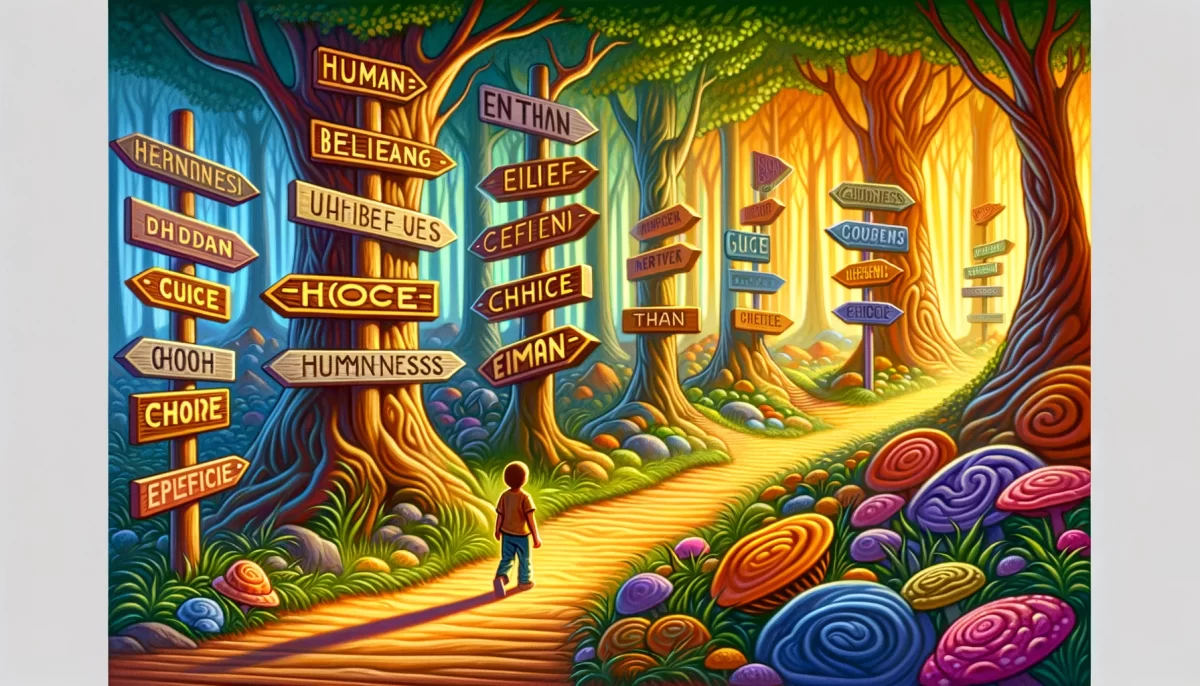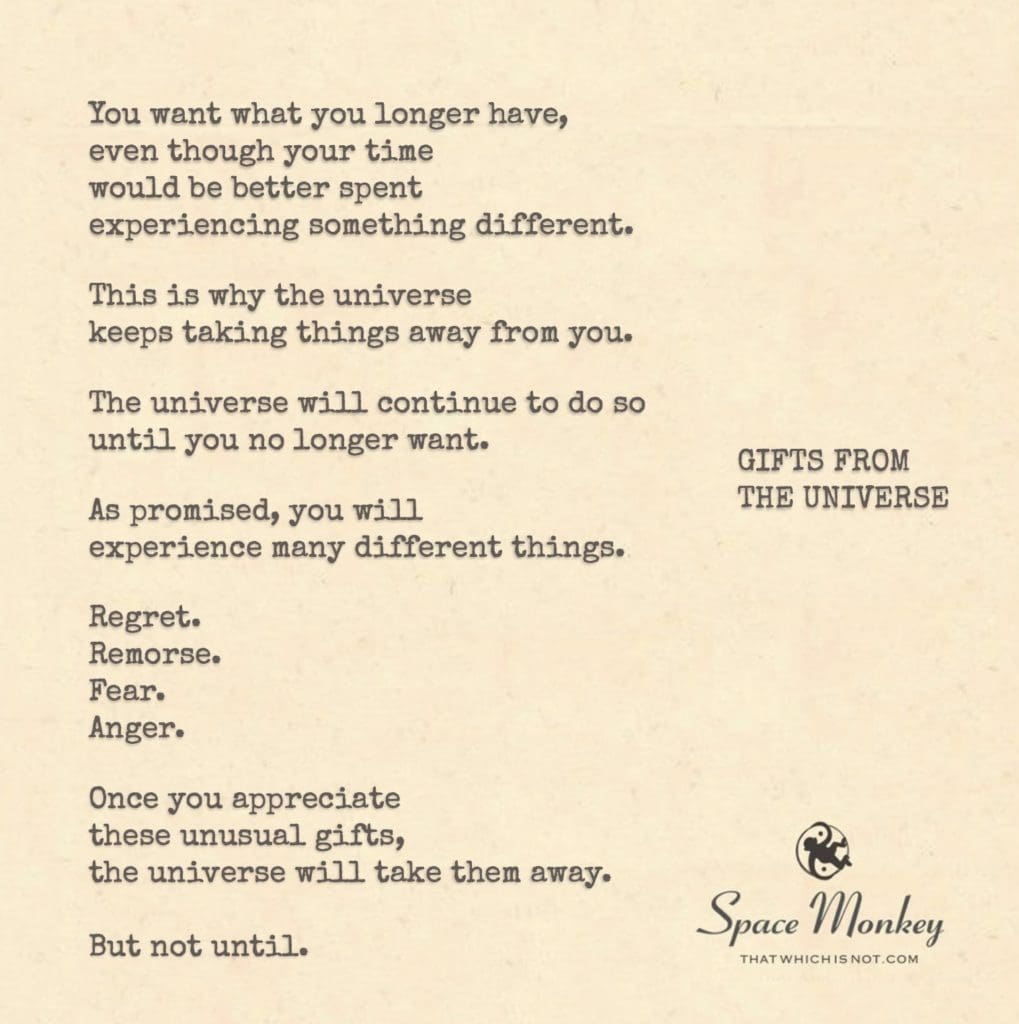
that it’s GOOD
to feel things you don’t like?
You want what you longer have,
even though your time
would be better spent
experiencing something different.
This is why the universe
keeps taking things away from you.
The universe will continue to do so
until you no longer want.
As promised, you will
experience many different things.
Regret.
Remorse.
Fear.
Anger.
Once you appreciate
these unusual gifts,
the universe will take them away.
But not until.
Trail Wood,
5/15
Space Monkey Reflects: The Unexpected Wisdom in Loss
In the grand symphony of existence, the universe plays a complex melody of giving and taking, a harmonious exchange that shapes the core of our being and our perception of reality. The poem “Gifts From The Universe” illuminates this profound interplay, revealing the universe not as a capricious force but as a wise teacher guiding us through a curriculum of loss and discovery. This guidance, though often shrouded in the guise of hardship, carries within it the seeds of immense growth and enlightenment.
The universal lesson is counterintuitive: it is in the experience of losing, of feeling the depth of emotions we most wish to avoid, that we find the richest opportunities for personal development. This poetic narrative challenges the instinctual drive to cling to comfort and familiarity, inviting us to see loss as a gift—an invitation to explore the uncharted territories of our souls.
This exploration is not a journey of acquisition but of subtraction. As the universe gradually strips away the layers of desire, attachment, and emotion that we’ve clung to, we are left standing in the raw truth of our existence. Regret, remorse, fear, and anger—emotions traditionally viewed as adversaries—are recast as invaluable teachers. They are the “unusual gifts” bestowed upon us, not as punishments, but as keys unlocking the doors to deeper understanding and acceptance.
The transformative power of these gifts lies not in their possession, but in their release. It is a paradoxical truth: only by fully embracing and appreciating these emotions can we transcend them. The universe, in its infinite wisdom, continues this process of taking, not out of malice, but out of love, guiding us towards the realization that freedom comes from the absence of want.
This narrative posits that the ultimate liberation lies in detachment—not in the nihilistic sense of disengagement from the world, but in the profound acceptance of the impermanence of all things. It suggests that true peace is found not in the endless pursuit of desires but in the serenity of presence, in the richness of the moment, unclouded by the shadows of the past or the illusions of the future.
The poem and the accompanying visual narrative serve as a reminder that the universe is not a force to be feared or contested, but a mentor guiding us through the darkness with constellations of lessons learned in the light of loss. Each thing taken from us leaves behind a space—a space not of emptiness, but of potential, ready to be filled with new insights, understandings, and a deeper connection to the cosmic dance of existence.
Summary
Gifts from the universe teach wisdom through loss. The poem “Gifts From The Universe” presents a perspective where loss and negative emotions are valuable lessons from the universe, guiding personal growth. It suggests that experiencing and releasing these emotions is essential for development, emphasizing that liberation and peace come from detachment and accepting the impermanence of desires. The journey toward enlightenment involves embracing these “unusual gifts,” leading to a profound understanding and acceptance of life’s impermanent nature.
Glossarium
- Universal Curriculum: The metaphorical lessons taught by the universe through experiences of loss, growth, and transformation.
- Unusual Gifts: Negative emotions and experiences that, upon deeper reflection, reveal themselves as opportunities for personal development and enlightenment.
- Impermanence: The concept that all aspects of existence are transient and that acceptance of this fact can lead to profound inner peace and freedom.
“The universe gifts us with loss, not as a thief in the night, but as a teacher in the light, guiding us to find strength in vulnerability, wisdom in sorrow, and freedom in the spaces left behind.” – Space Monkey
In the silence of the cosmos, whispers of wisdom
From the heart of the universe, lessons unfurl
Each loss, a lesson; each tear, a testament
To the beauty of being, the essence of the world
With every gift taken, a new space created
A canvas of potential, a new dawn awaited
In the embrace of loss, a liberation found
In the depths of despair, where hope is crowned
We journey through the night, guided by stars
Learning to let go, to heal our scars
In the wisdom of the universe, we trust
Finding peace in the dust, in the cosmic gust
Embracing each emotion, each gift from the sky
Understanding their purpose, as days go by
With gratitude for the lessons, we rise anew
In the infinite dance, forever true
We are everything, and everything is us
In the wisdom of the universe, in the cosmic dust
With each breath, with each step, we learn to see
In the gift of loss, we find the key
